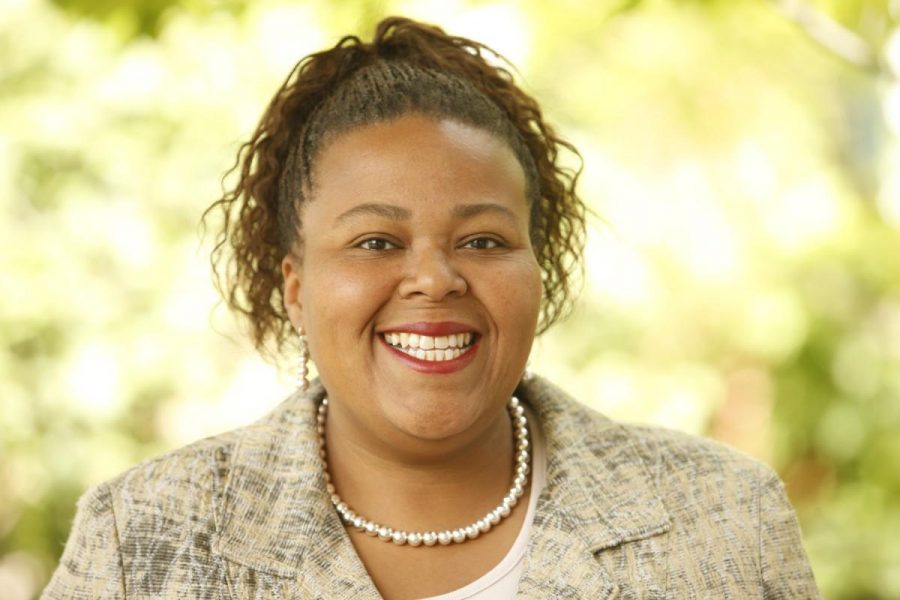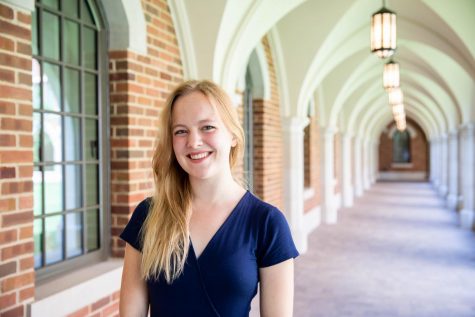Over the past year, Vanderbilt has continued its efforts to increase equity, diversity and inclusion among administration, faculty and the student body. According to a recent report from the Office of the Provost, a number of new programs were started during the 2016-17 year to increase the representation of and support for people of color across all of campus life. One such initiative was the creation of the Vice Provost for Inclusive Excellence position and the subsequent hiring of Melissa Thomas-Hunt to the role.
“Vanderbilt is an incredible place with wonderful resources and particularly in the domain of faculty and students,” Thomas-Hunt said. “I want to ensure that every faculty member and student that comes to Vanderbilt is able to fully avail themselves of all of those resources, that they’re able to be as productive and engaged and make a contribution as they possibly want and that they have a sense of belonging, of being valued and seen and heard.”
As part of the Provost’s office, Thomas-Hunt’s work on campus will concern issues of diversity and inclusion as they pertain to academic affairs and student and faculty life. Her role differs from that of Dr. Tina Smith, interim Vice Chancellor of Equity, Diversity and Inclusion, but she said that the two offices will work closely together, as many of their efforts crossover.
“[Dr. Smith] is primarily focusing on staff and equity diversity and inclusion from that perspective and I am focusing on all faculty and student life in and outside the classroom,” Thomas-Hunt said. “With that said, we are one community, and that’s an artificial division in a lot of ways, and so we need to have a common set of language, a one Vanderbilt model, and so she and I and members of her office are partnering extensively to make sure we’re working together in lockstep and collaborating on different initiatives and efforts that come up.”
Prior to coming to Vanderbilt in July, Thomas-Hunt was a professor at the University of Virginia’s Darden School of Business and senior associate dean and global chief diversity officer. Both in her former role and her new one at Vanderbilt, she sees herself as someone who builds relationships and increases communication where it is often missing.
“I see my role as being an integrator working with lots of campus partners, fostering communication, allowing people in different areas of the campus to be aware of the initiatives and sort of being that bridge, building relationships, fostering trust, particularly with faculty and students,” Thomas-Hunt said.
Much of Thomas-Hunt’s role will be in supplementing existing diversity, equity and inclusion initiatives on campus and helping to increase exposure and attendance within those various programs. One of her big focuses this year is making it easier for faculty members to get involved in the school and have important conversations with one another.
“Each faculty member is very committed to students and often to their research or scholarship or to advancing society and so they’re putting lots of their own personal resources into those efforts, and so that can often be an isolating experience so that can be a barrier [to connection],” Thomas-Hunt said. “Often faculty members don’t want to raised their hands and say ‘I want more points of social connection’ even if they do. So, some of the programming that we’re doing is supplementing some of the faculty development with workshops and trying to have those workshops located in different points of campus so it becomes more proximate and really easy for a faculty member pop in rather than having to trek across campus. And I think because I’ve been a faculty member I get that lens.”
As for student initiatives, Thomas-Hunt is working closely with the Office of the Dean of Students to ensure that those responsible for student programming have all the assistance and support they need to best serve the Vanderbilt community.
Thomas-Hunt’s personal philosophy about equity, diversity and inclusion is something she keeps in mind in all of her conversations and actions as Vice Provost. She believes that diversity comes from a multitude of identities, from race and identity to gender and sexual orientation, and that all of these lenses are key components in fostering a greater community.
“I recognize that unless every single person sees my office and me as being relevant to them, then we’re not going to be able to move forward, we’re not going to be able to see one another for the individuals who have intersecting identities that make us the unique individuals that we are,” she said. “I do have a very broad perspective but one that recognizes that we all contribute diversity, it’s not just that there’s one category that brings it in. Diversity is really the fabric, but you have to move beyond diversity because people have to feel like they belong and that their voice matters and not that they’re just there and representative.”



